Canyon released the new women’s specific Spectral trail bike earlier this year, and it features a unique frame, suspension design and geometry. But how different is the women’s Spectral to the unisex version? We got one in for our speedy tester Rachel Sokal to find out. Over to Rachel!
There have been a good few developments within the Canyon range, with the Spectral WMN encapsulating two of them: the Spectral’s redesigned suspension system and the new women’s specific range.
With many other brands moving away from women’s specific ranges this development by Canyon is an interesting one. Amanda went out to France for the launch at the start of the year and has given more background on Canyon’s rationale here.
In brief, Canyon wanted to account for some key differences that it has observed between its male and female customers: women tend to have shorter arms, are lighter and sit further back on the bike.
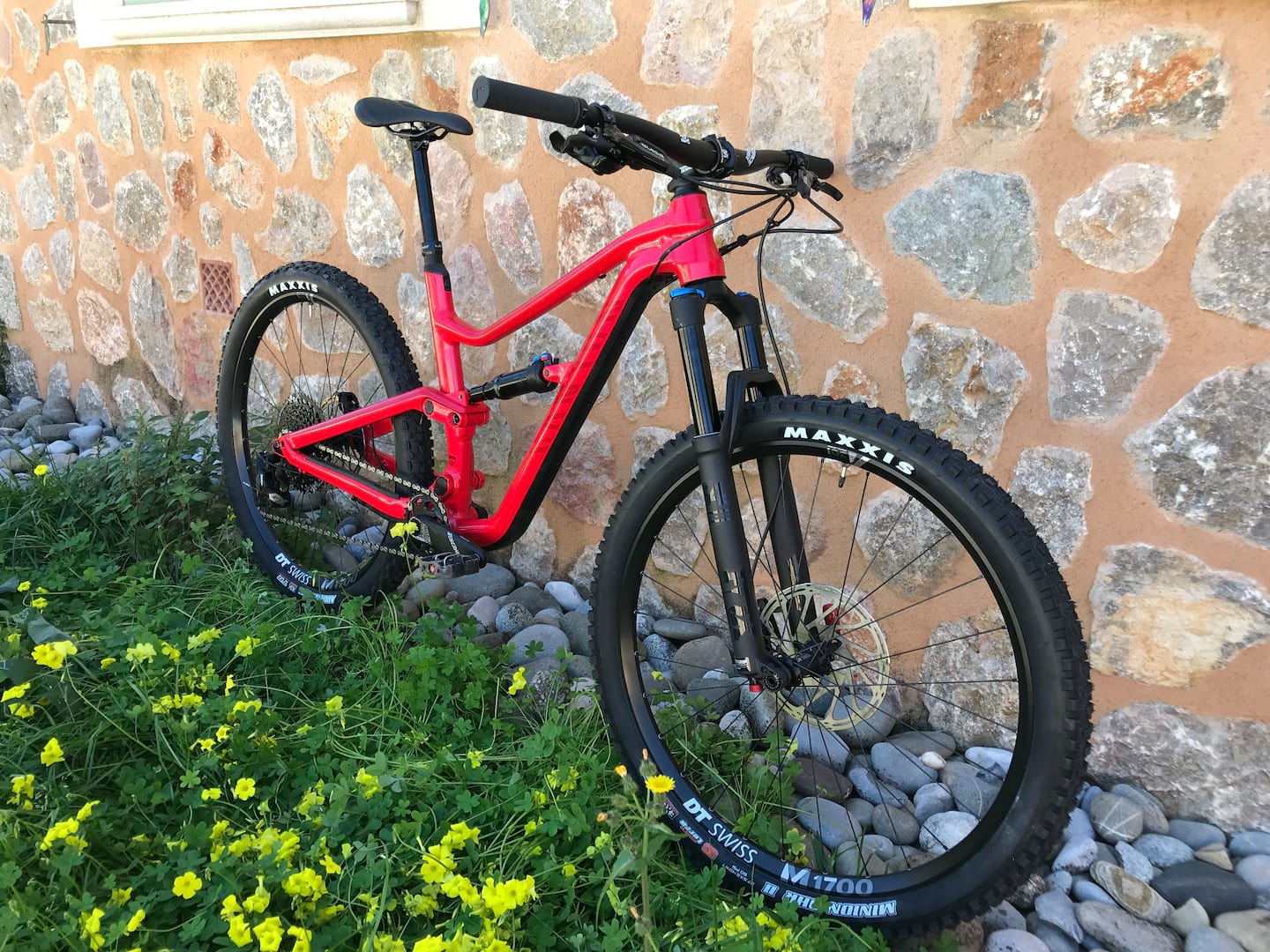
Personally, I’m cynical about the whole women’s specific geometry thing. In part that’s because of some very tokenistic attempts by brands in the past (‘shrink it and pink it’, and build it with a poor spec whilst you’re at it) and in part because not all women are the same size or dimension or have the same riding style.
So, just as the way that not every men’s or unisex bike will suit every man, simply because it’s a women’s specific bike it doesn’t mean that it will fit and suit me and my riding style. That’s not to say I’m completely against it, and the speccing of bikes with thinner grips, shorter stems and suspension tuned for a lighter weight all have the potential to save me lots of faff and money as these are the things I often end up changing first.
The Spectral WMN is a mid-travel (150mm front and 140mm rear) trail bike, matching the unisex version that we have previously tested. It’s really pleasing to see that Canyon has produced a good few build options in the women’s range and, although not quite as many as the unisex, the price range is the same so there’s good choice to match your budget.
Prices in both ranges start at £1,699 for the entry level aluminium-framed bike and go up to £4,499 for the whizzy carbon framed CF 9.0. A key element of Canyon’s women’s range is the sizing, which starts with an extra-extra small (2XS) for riders from 148cm tall (4 foot 10) through to a medium for those up to 179cm (five foot 10). At 5 foot 6 (167cm) I’m just shy of the recommended height for the medium. However, having looked at the geometry I felt the small would be a bit short for my tastes so went for the medium.
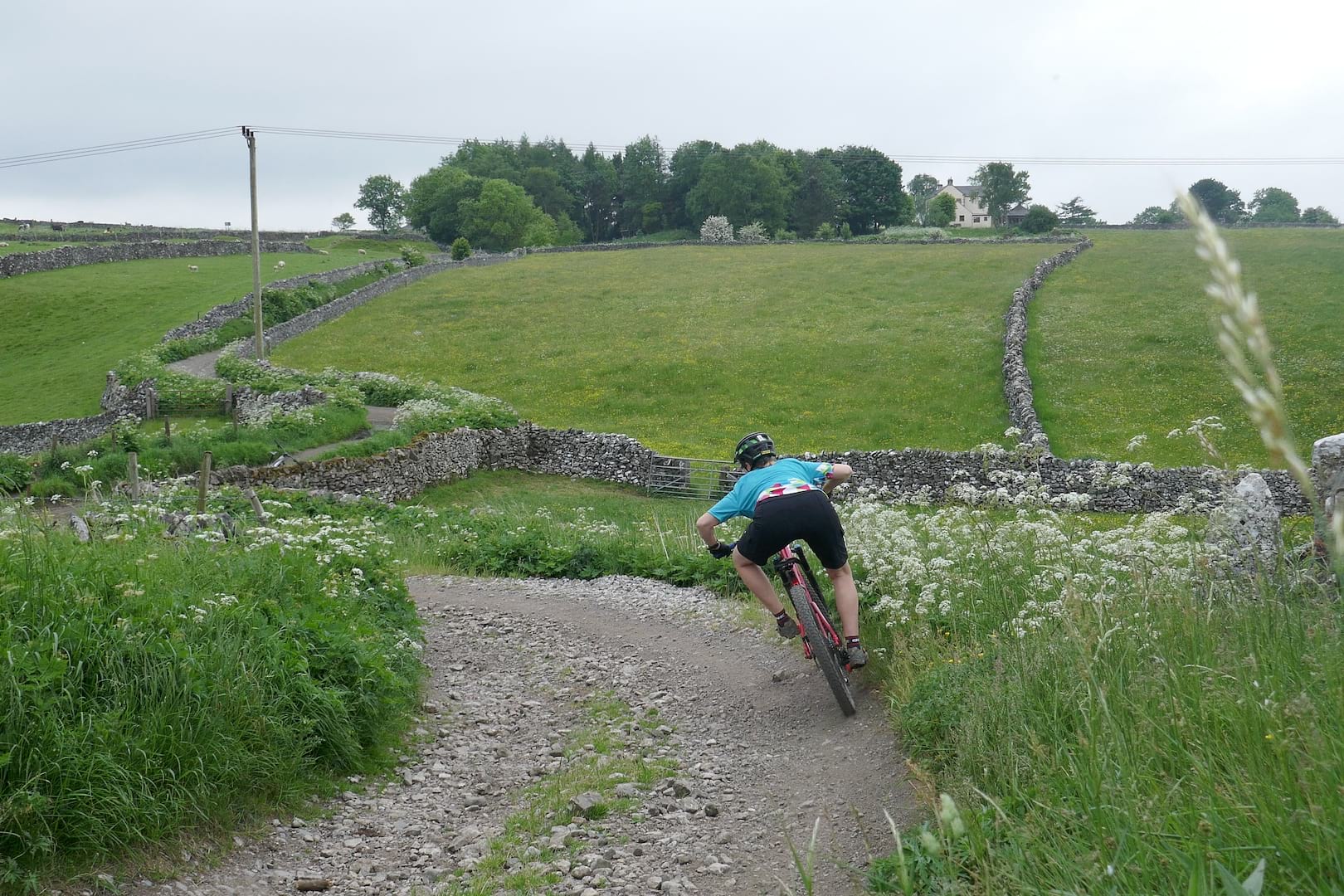
The Bike
From its rider data Canyon identified that females tend to have less upper body strength and ride with their weight further back on the bike compared to male riders. Combined with a ‘standard’ geometry this can make the front of the bike harder to load and control, which leads to a lack of front wheel traction. To account for this Canyon has designed the Spectral WMN to be shorter and lower, which means it’s easier to get your weight over the front of the bike.
On paper these differences give a 10mm-ish shorter reach and a slightly lower stack on the WMN models compared to the unisex. The 65.9° head angle is pretty much the same on the two models (66.0° on the unisex). Standover on the WMN is a generous 741mm (medium) leaving lots of room to move the bike around and the 74° seat angle allows for a good position over the BB to transmit the power when you’re pedalling. The BB has been lowered too, resulting in a drop of around 20mm.
In comparison to the top-of-the-range, fancy-pants CF 9.0 model that Amanda got to ride out on the launch in France, I had the more modest AL 6.0 for a longer test. Price-wise the AL 6.0 is the middle of the three aluminium frame builds that are available and as we’ve come to expect from Canyon the amount you get for your £2,349 is pretty impressive. Suspension is courtesy of a Fox 34 Performance fork and Fox Performance Float DPS EVOL shock that is tuned for lighter riders. Compared to its predecessor the Spectral’s suspension linkage is designed to give a more responsive feel at the start of the travel for good traction and small bump sensitivity. Once in the mid-stroke the tuning provides a more stable feel before ramping up at the end of the travel.
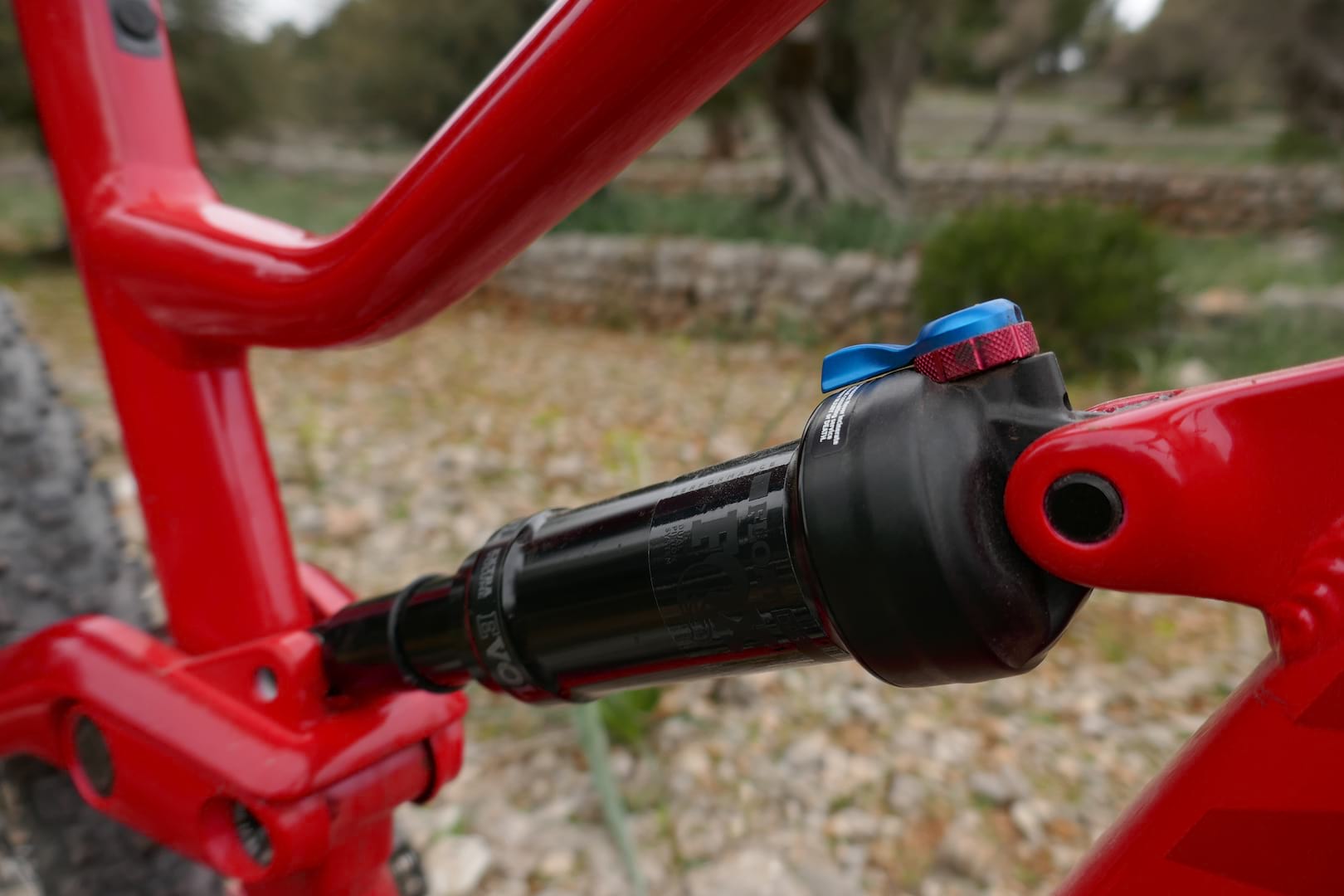
The DT Swiss M1700 Spline tubeless ready wheelset has a 30mm internal rim width, straight pull spokes and DT Swiss’ excellent ratchet freehub, making them robust, reliable and not excessively heavy – exactly what you want to see on a mid-travel bike. The specced Maxxis Minion DHR II 2.4 up front and Ardent 2.4 on the rear proved an excellent pairing on pretty much everything I rode whilst I had the Spectral on test.
Stopping and going duties are down to SRAM with Guide R brakes, a Truvativ Descendent crank and 1×12 GX Eagle transmission. It is pleasing to see that Canyon has given some thought to making the gearing ratios more fitting of a female rider’s typically lower power output, although I did find the 30t chainring combined with the 10-50 cassette a little too generous for my liking even on steeper terrain. The medium gets a 175mm crank (170mm on the smaller sizes), a length calculated from inseam measures in Canyon’s rider data.
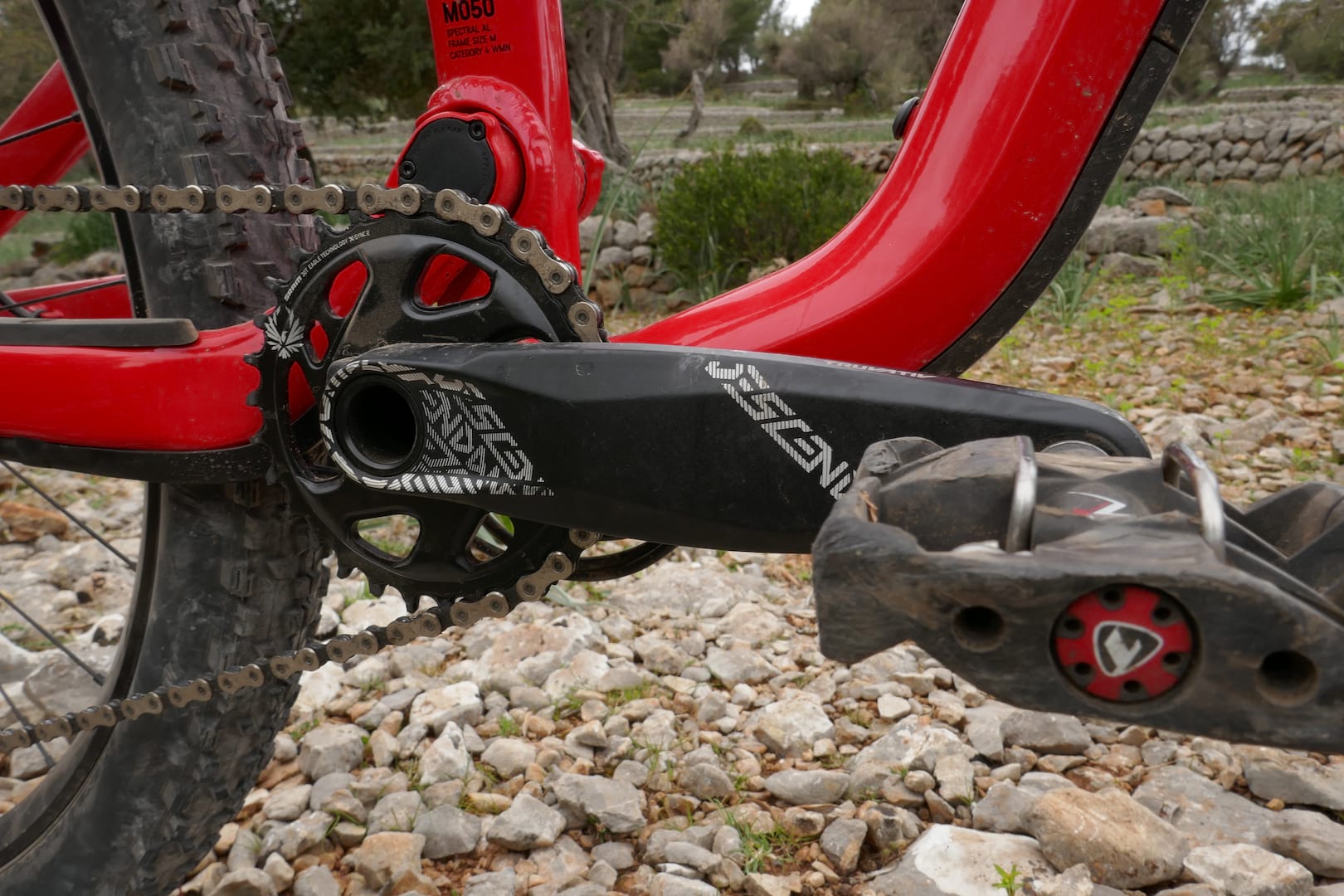
Personally I’m not a big fan of SRAM Guide R brakes. The reach on the Guides is adjustable (as the R signifies) which is useful for smaller hands especially given the size of the lever; however, the bite point itself is not and the direct action piston means that there is quite a lot of free-throw in the system.
As with every other set of Guide Rs I’ve ridden with the lever wound in, once there is a bit of wear on the pads the brakes lose their feel and power and even squeezing them right back to the bar only returns a tiny amount of power. This is resolved if you wind the levers back out but then that negates the advantage of the adjustable reach. Of course, this is an issue with the brake rather than the bike itself but given many women will want to wind the levers in to account for their smaller hands there could be a better choice.

Bars and stem are RaceFace Ride and there’s a KS LEV Integra dropper post. Due to the generous standover height of the frame the droppers are of a good length (150mm on medium, 125 on small and XS, 100mm on XXS) giving you lots of room to move with the saddle dropped.
It is something you need to watch though if you plan to upsize your frame as I did, as I was pretty close to not being able to get enough post into the frame to get my pedalling saddle height correct. This would be easy to change by fitting a post with a smaller drop, just annoyingly expensive to do so. What’s good to know is that Canyon actually lists the saddle heights for each size in the geometry charts so it’s easy enough to check before purchase.
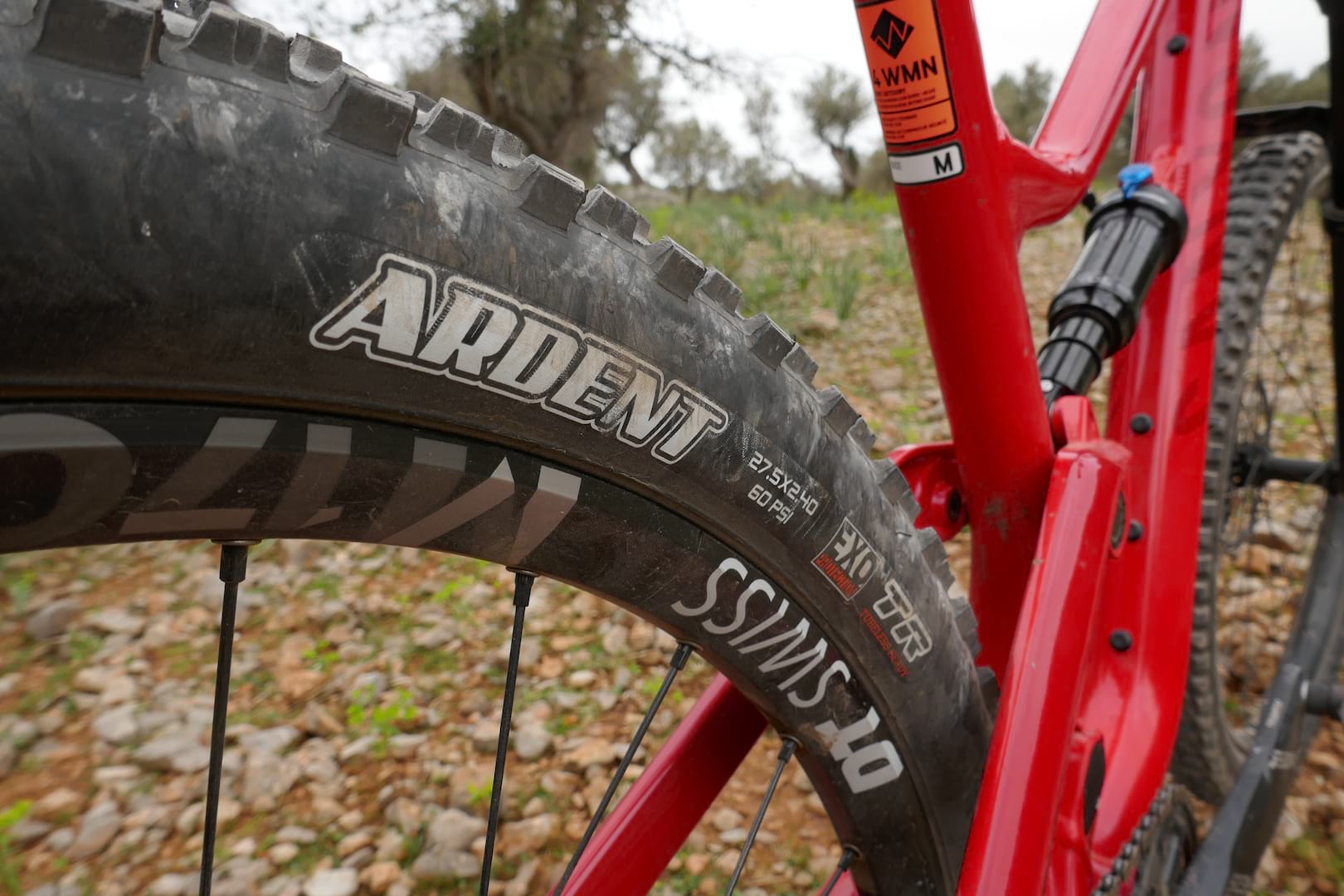
The hydroformed aluminium tube frame accommodates some clever features. Firstly there’s the neat downtube cover that acts as a frame protector whilst also housing all the cables. This gives a neat and tidy appearance of an internally routed system without the need to lose hours of your life to a recabling job. Other cunning features are an Impact Protection Unit with break-away bolts near the head tube to prevent top tube damage from levers and bars in the event of a crash. There’s a little cap on each side of the suspension’s main pivot to prevent the best of British getting into your bearings. On the driveside this cap also the covers the front mech mount.
Finally, and away from the frame, there’s Canyon’s rear axle hideaway quick release that allows for easy tool free adjustment. Very handy for when you fail to do your wheel up tight enough and it works lose. Ahem…
The internal seat post clamp makes the downtube rather less sleek than it might be but aesthetics aside it functions really well; the bolt is easier to access and only requires 4nm torque to tighten which makes on-trail tweaks with a small multi-tool a breeze. There are little rubber bungs that protect the seat post, water cage and Canyon’s frame case which slots between the top of the down tube and top tube. I can’t really comment on the value of these bungs as after a few rides I’d managed to lose most of them somewhere on the trails.
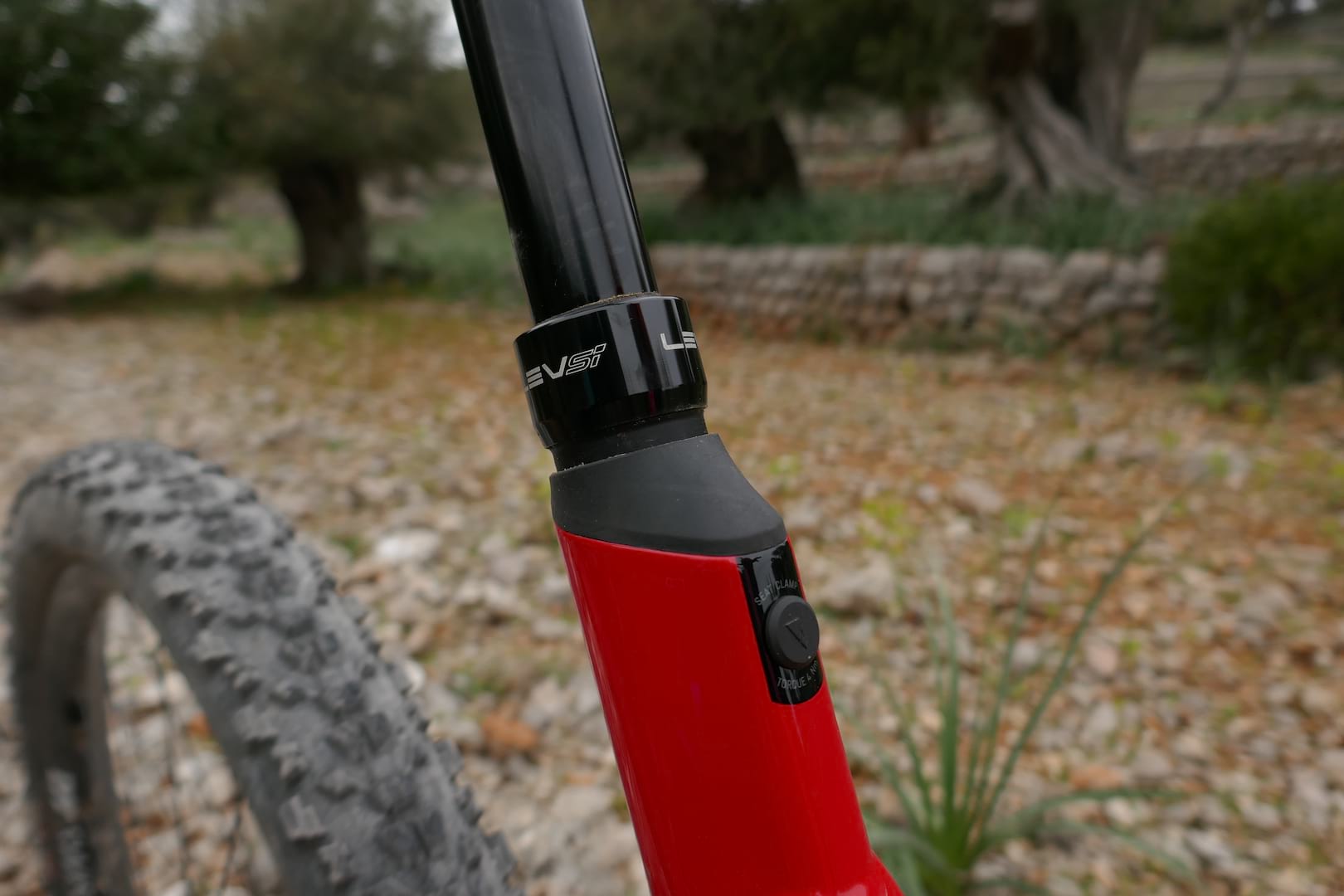
The Ride
With its compact and upright position, the Spectral is a really comfortable and easy bike to ride. The shorter reach and 740mm wide handlebar ensure that there’s no untoward stretching to reach the contact points. Overall this gives a relaxed feel and makes it well suited to someone who is newer to mountain biking.
With very little input it happily will roll over smaller roots and rocks as well as smoothly ride through corners and turns. The low centre of gravity and front end weighting keep the bike nicely planted, and the front wheel tracks with comparatively little input needed. These attributes make it really well suited to flowly and undulating trails, the typical blue and red trail centre stuff, or less technical natural riding.
It means it’s also an ideal bike if you’re a less-confident or less-experienced rider; its 27.5in wheels and mid-travel will happily cope with pretty much everything you’ll come across in the UK. Probably the best way to describe it is that you can be fairly passive and the bike will happily cope with the terrain on your behalf.

Whilst the Spectral WMN is great on flowly trails, it isn’t as well suited to more technical trails that demand a more active and aggressive riding style. On twisty and undulating singletrack, there isn’t the acceleration and feedback that you need to make the most of these trails.
Granted this isn’t meant to be a skinny XC machine, but still the Spectral felt sluggish in comparison to other bikes I’ve ridden in the same bracket. It’s difficult to unpick exactly what makes a bike good and bad at different terrain, after they’re an overall package not individual parts, but my best guess is that it was a combination of the slack front end and the dampened feel of the suspension.
I ran the rear suspension at the recommended 25% sag but still found it too wallowy for my liking and not well balanced between front and rear – the bike sat well into its rear travel and I regularly bottomed it out whilst I struggled to get full travel out of the forks. A fair bit of tweaking of pressure, turning up the rebound in the rear and removing spacers in the forks improved things but I still kept tweaking all the time I had the bike on test.

On much steeper trails the Spectral quickly changed from something that gave confidence to one that made me somewhat nervous. The forward-weighting and short reach meant that I often found myself too far over the front of the bike – a feeling that became more pronounced the looser, more technical or steeper the trail became. To compensate I tended to hang my backside off the back which, of course, completely unloads the front wheel; I could never seem to find that perfect mid-spot. I found I had to ride some familiar trails – like more techy and steeper stuff in the Peak District and North Yorkshire as well as red and black trail centre stuff – slower and more conservatively than I would do usually.
I found the 740mm bar was too narrow for my liking and contributed to feeling less stable on techy terrain. Canyon’s rationale for speccing a narrower bar is that it found that women tend to have shorter arms and so don’t want or benefit from riding a wider bar. However, starting with something wider would give more options for riders – after all it’s a whole lot easier to trim a bar down than make it wider – but Canyon’s direct to consumer model makes it harder for customers to change if they don’t have the confidence to do it themselves.
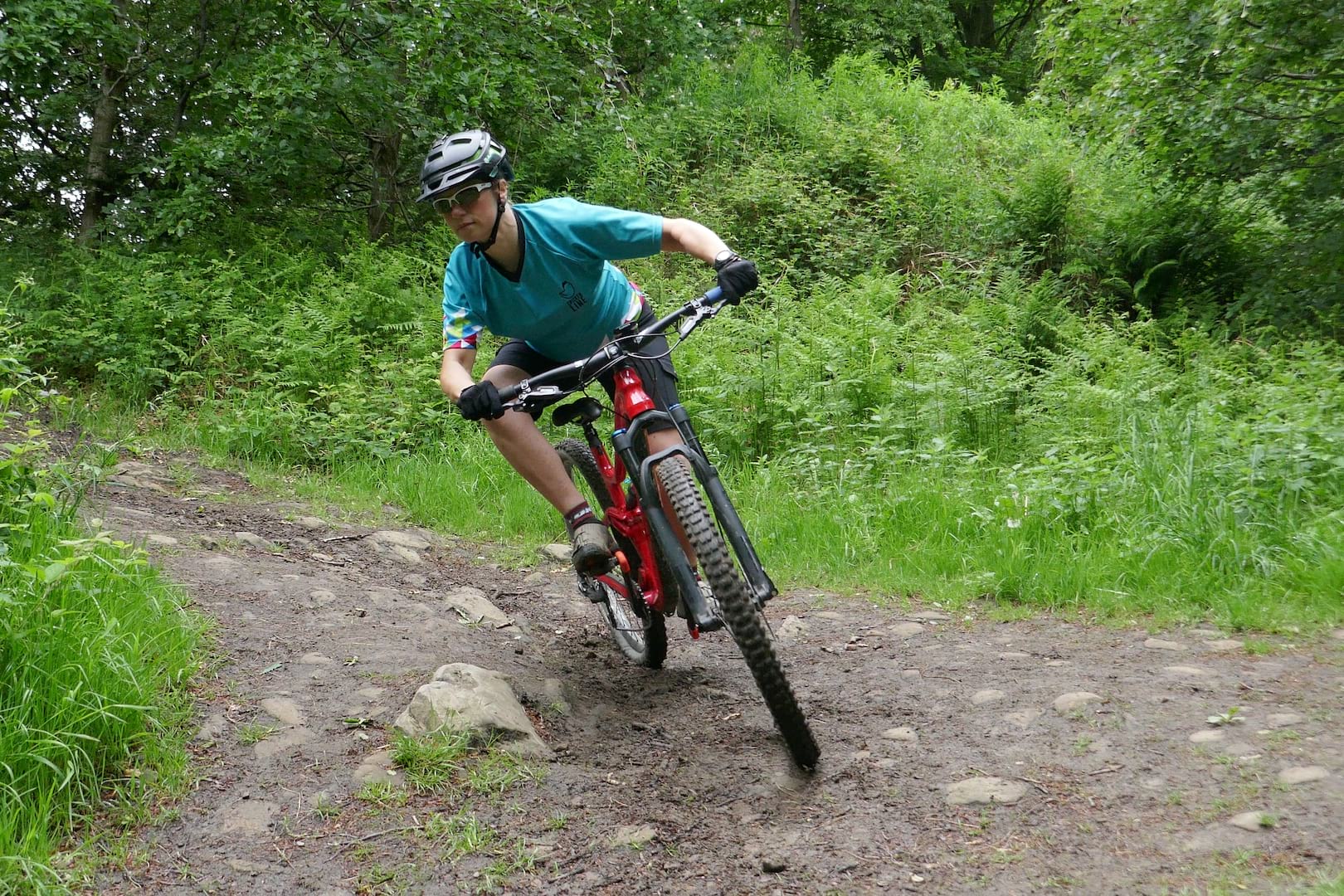
The pedalling dynamics combined with the generous gear ratio make the Spectral comfortable to climb and generally pedal without any undue effort. It copes with most hills quite happily although on steeper and more technical terrain or when you want a bit more acceleration, the slack front end and relaxed position make it a bit sluggish and hard to keep the front wheel where you want it.
The low BB keeps your weight really planted and it’s easy to get the bike to stick to the ground when you want it. On the downside the low BB combined with 175mm cranks it made for the perfect pedal strike combination. Given the trend to lower BBs I’ve got used to the need for the odd ratchet to avoid a pedal strike on particularly high rocks or step ups but I found the problem particularly noticeable on the Spectral and I would regularly get strikes just riding over innocuous looking roots and small stones, let alone anything of any significant size.
Swapping out the cranks to some 165mm ones solved the problem and after that I didn’t have any issues where I wouldn’t expect them on a modern trail bike. Of course, crank length on a mountain bike is as subjective as it is biomechanical, with some riders (like me) favouring a shorter crank for better clearance and easier spinning, whereas others like a longer crank to produce a higher torque at a low cadence.
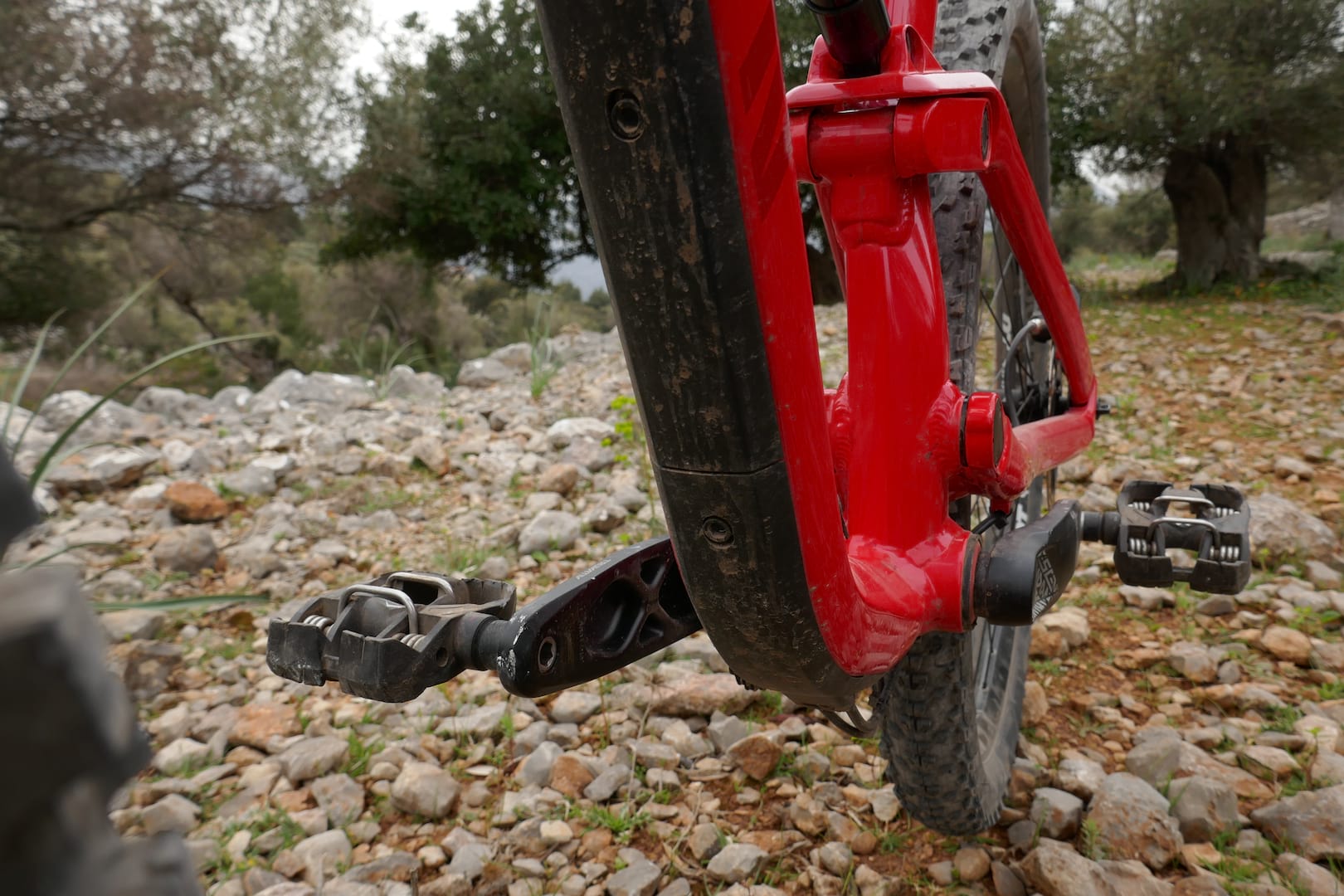
Size-wise I found the shorter reach and narrower bars made the Spectral WMN feel a bit small for my liking even though I was riding a size which (according to Canyon) should have been too big for me. It did highlight to me that overall the sizing range might need tweaking a bit to accommodate taller riders, something that our 5’8” Amanda had found too and we’ve noticed on other Canyon bikes we’ve ridden. If you’re a shorter rider and looking at the small and extra small options than the Spectral WMN is likely to suit you well, if you are a bit taller then you may want to consider the unisex range instead.
Three Things That Could Be Improved
- Stability on more aggressive trails and riding
- Shorter crank length to lessen pedal strikes
- Increased reach / bigger size options for taller riders
Three Things I Loved
- Build value for money
- Availability of smaller sizes across the range
- Externally accessible internally routed cables
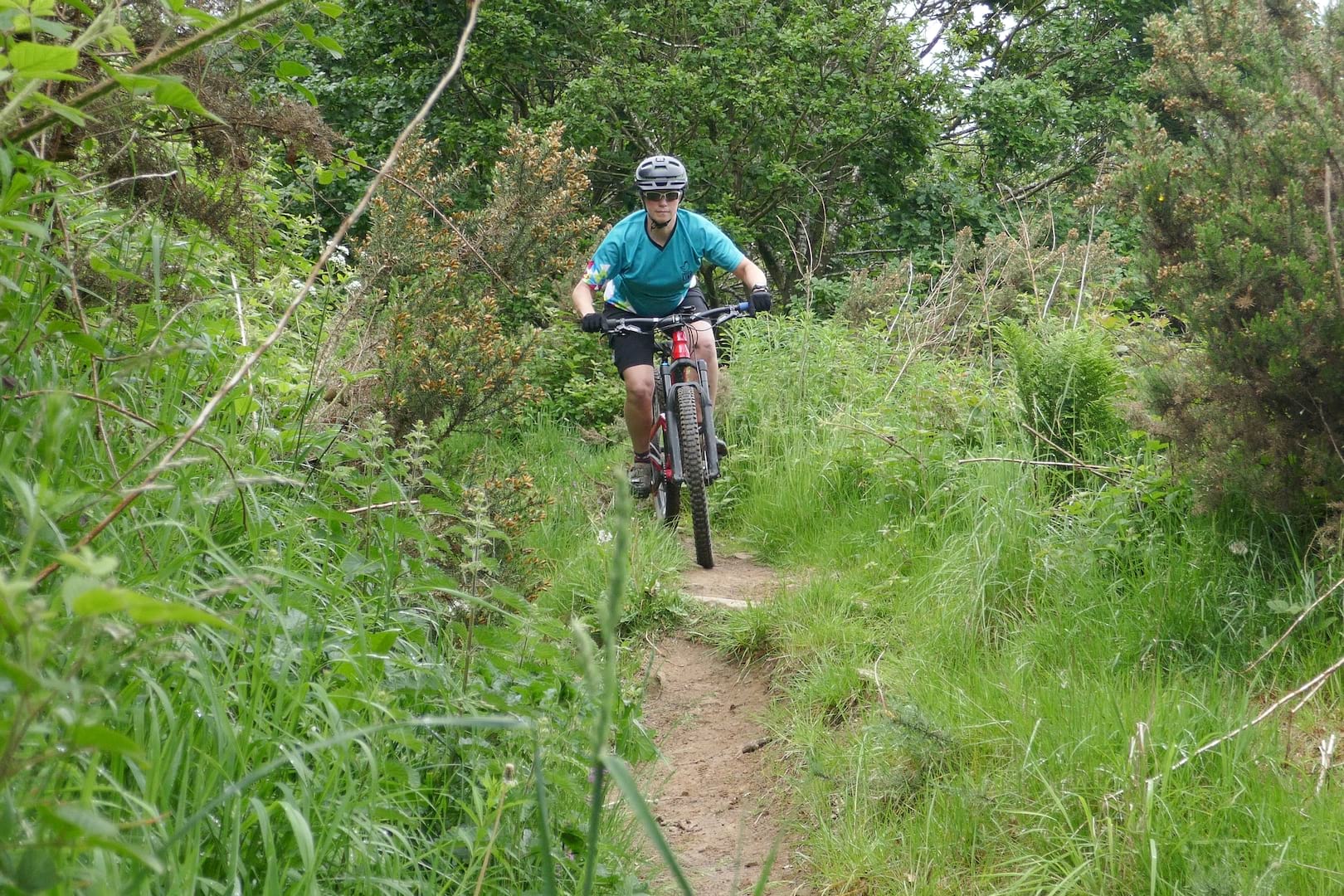
Overall
As we’ve come to expect from Canyon the Spectral WMN is a great value for money option. It’s at its best on flowy trails and small features where its capabilities mean you don’t need to be too concerned about picking a line, manoeuvring the bike or shifting your weight about.
The upright riding position also means it’s very comfortable for all-day riding, though advanced riders and those with a more aggressive riding style won’t get on so well with it. If you’re in that boat, you’ll likely get on better with the geometry of the unisex version.
But for newer riders, and those transitioning from a hardtail, the Spectral WMN is a steady and easy to ride trail bike. It has plenty of suspension travel, fantastically grippy tyres, and a decent dropper post – all good confidence boosters for progressing your riding.
2019 Canyon Spectral WMN CF SLX 9.0
- Frame // Hydroformed aluminium, Women’s Specific Geometry & Suspension, 140mm Travel
- Fork // Fox Factory 34 Performance, 150mm Travel
- Shock // Fox Performance Float DPS EVOL
- Hubs // DT Swiss, 110x15mm Front & 148x12mm Rear
- Rims // DT Swiss M 1700, 30mm wide
- Tyres // Maxxis Minion DHR II 2.4in Front & Ardent 2.4in Rear
- Chainset // Truvative Descendant 6K Eagle with 30t Chainring
- Rear Mech // SRAM GX Eagle, 12-Speed
- Shifter // SRAM GX Eagle Trigger, 12-Speed
- Cassette // SRAM XG-1275 Eagle, 10-50t, 12-Speed
- Brakes // SRAM Guide R, 180mm Front & Rear
- Stem // Raceface Ride 50mm
- Bars // Raceface Ride, 740mm Wide
- Grips // Canyon G5
- Seatpost // KS LEV Integra SI 150mm
- Saddle // SDG Allure MTN
- Size Tested // Medium
- Sizes available // X-Small, Small & Medium
- RRP // £2,349

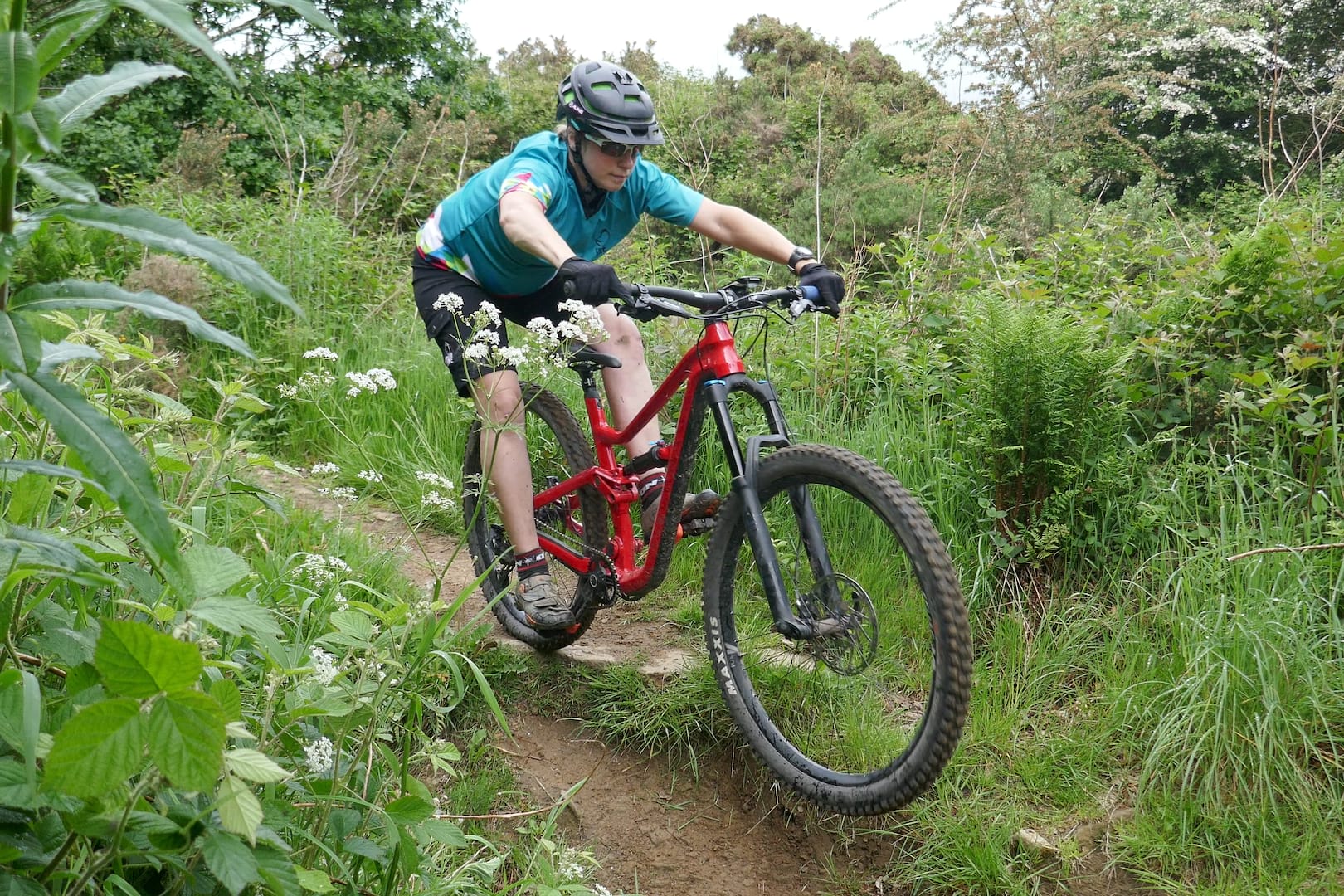




Has anyone (male or female) ridden the male and female version of the same spec bike, back to back?
If so, could you tell any difference?
Which did you prefer? (knowing that that is an individual personal preference)
Very interested in this as first FS for daughter coming up from Islabikes Creig 26, as they do a properly small size. The small sizing appears to be the main advantage here.
Unfortunately almost every model is out of stock, apart from a few larger sizes. Presumably I have to wait for a 2019 model now?